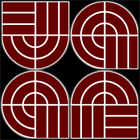| |
|
Capabilities
JAR's Background in CAD/CAM/CAE Technology
and FEA Consulting
The procedures for development, implementation, and efficient utilization of CAE technology have evolved
significantly in the last decade. JAR has been at the forefront of this evolution and is at the leading edge in
integrating analysis and design tasks.
At JAR, state-of-the-art computers, graphics displays, desktop publishing, and CAE software are
integrated to solve even the most difficult problems. JAR's engineers have the expertise to carry out sophisticated
engineering analyses in such areas as structural strength, fracture and failure, and simulation of manufacturing processes.
Their problem-solving skills range from closed form solutions and handbook calculations to the preparation of highly refined
computer models using the most advanced or special purpose tools.
The Finite Element Method (FEM): A Little History
|
|
JAR is a multidiscipline engineering consulting and design support firm, founded in 1977, and headquartered in North Kingstown, Rhode Island.
JAR's goal is to provide the best mix of engineering consulting, software, and product development services to its clients. JAR is dedicated to providing expertise in computer methods for structural and interdisciplinary engineering analysis.
For over 35 years, JAR has specialized in providing computer aided engineering (CAE) and computer aided design
(CAD) solutions to industry, government and the legal community.
Knowledge + Experience = Success
|
|
|
The finite element method (FEM) is a powerful computer based mathematical analysis and design tool which emerged with the advent of the high speed digital computer. Its development was pioneered during the 1950's and 1960's by structural engineers working in the aerospace industry. JAR is widely recognized for its contributions to the development, implementation, and expert utilization of finite element computer technology for linear and nonlinear static and dynamic structural analysis, fluid flow, heat transfer, and fracture mechanics.
JAR's development as a leading source of integrated CAD/CAM/CAE products and technical services dates back to some of the JAR research and development projects of the late 1970's and early 1980's such as:
- The development and implementation of a library of hyperelastic finite elements capable of modeling arbitrary large strains for axisymmetric, plane strain, and three-dimensional analysis of elastomeric components. A companion capability for modeling contact between a deformable body and an arbitrary semi-rigid boundary was developed. (These features and their descendants are now part of the ANSYS program.)
- The development and implementation of a finite element computer program for thin elastic flexible beams under large displacements and rotations, and with arbitrary boundaries. Applications include: fiber optics, cables, flexible space structures, marine risers, and drill strings.
- The development of a Timoshenko beam formulation for use in solder joint analysis which accommodates plastic deformations and creep in both bending and shear.
More Recent JAR R & D Projects
- The development of a special purpose FEA code to demonstrate the application of
space-time element formulations to problems of wave propagation and underwater acoustics.
- Internally funded R&D into finite element based structural analysis of the human left ventricle
using solid models derived from transesophageal endocardiograms.
- Development of a fully-coupled, Reynolds equation based ANSYS user element for fluid-structure
interaction applications.
In recent years, JAR has pursued advanced and special purpose applications of FEM for our clients in industry and government. For example, JAR's emphasis has shifted from the realm of linear stress analysis to the application of FEM to:
- process simulation for plastics and die casting
- MEMs simulation
- transient shock simulations
- drop testing
- large strain plastic deformation under extreme loads
- coupled fluid-structure interaction
- modeling of compressible flows, turbulent flows,
and species mixing
|
- acoustics
- manufacturing simulations
- innovative finite element formulations
- design of biomechanical devices
- simulation of biological structures
- new uses of advanced composites
- integration of part and machine design with the
analysis process
|
Of course, JAR's engineers are still experts in traditional finite element modeling techniques, and can provide clients with a cost effective alternative to in-house performance simulation.
|
|
|
